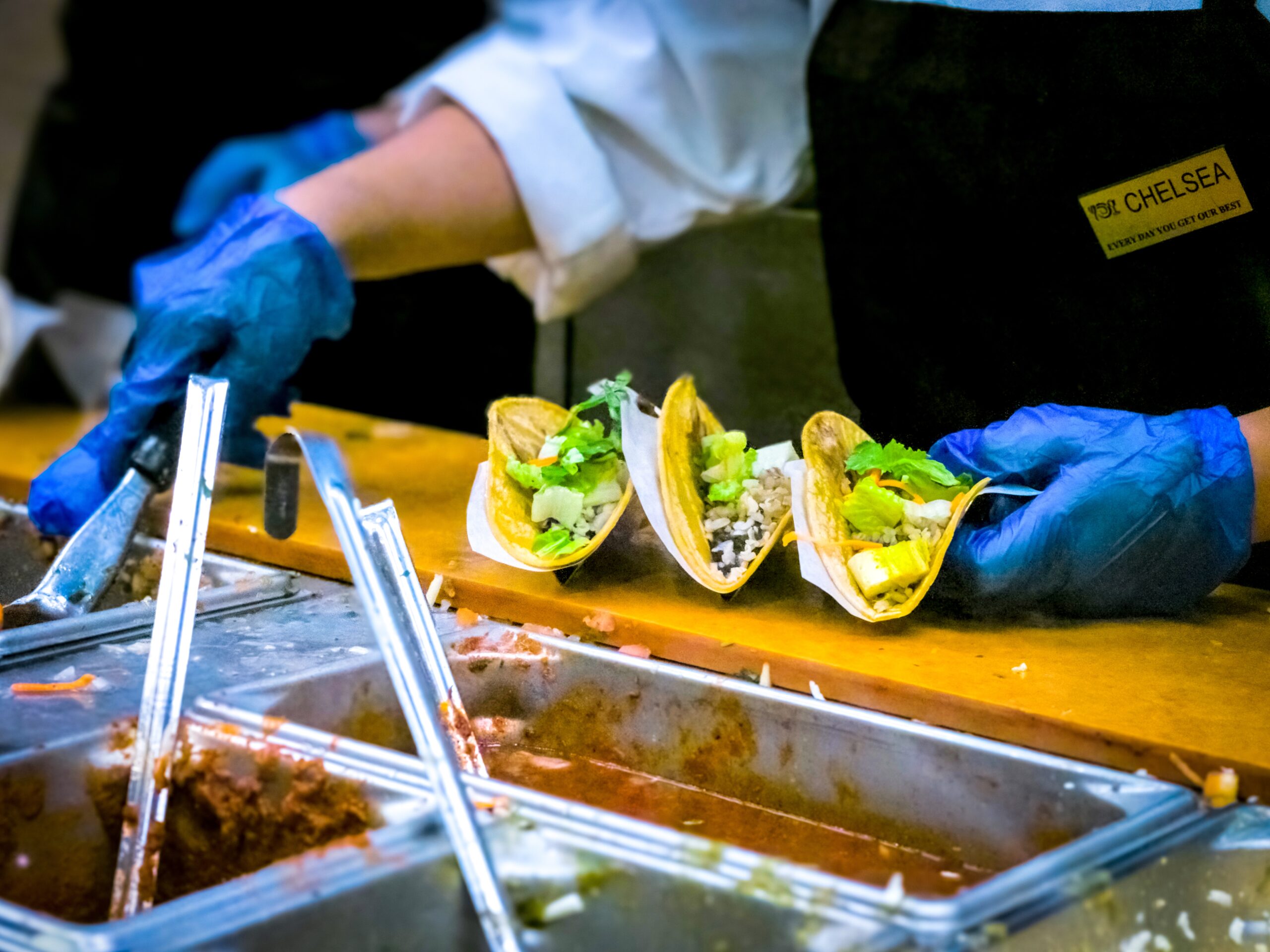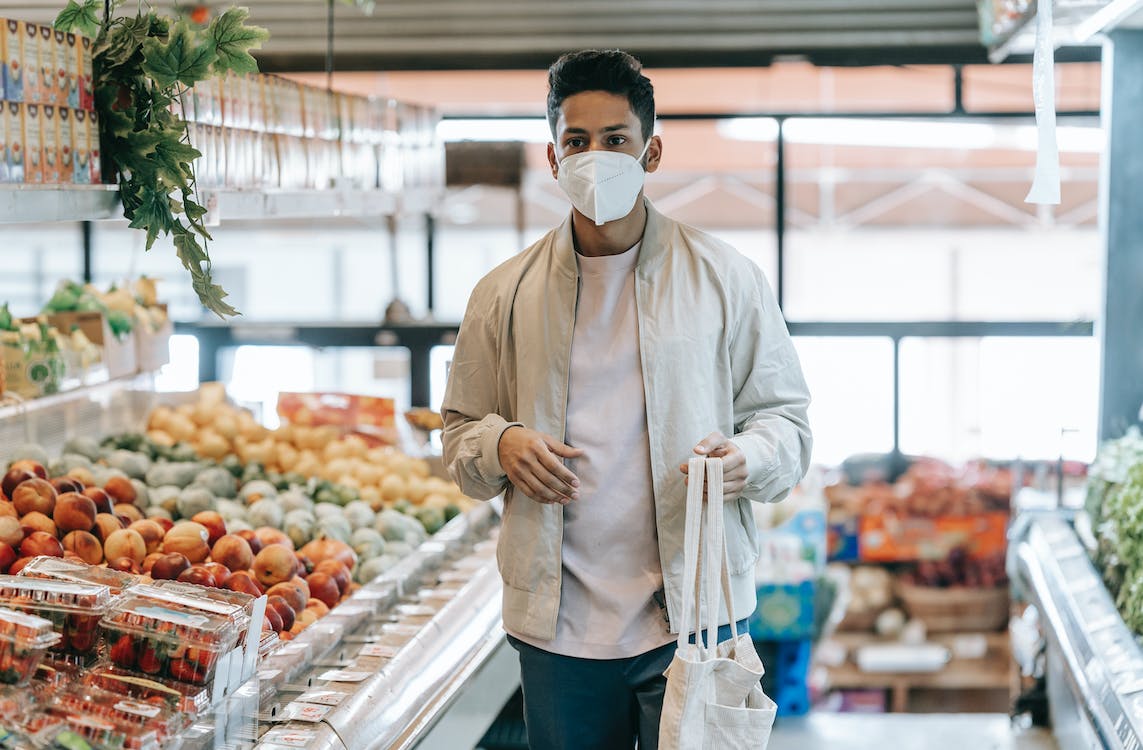The Importance of Proper Food Handling and Storage

Proper food handling and storage are extremely important to avoid foodborne illnesses. Contaminated food can contain harmful bacteria, viruses, and other microorganisms that cause illness. According to the CDC, about 48 million people get sick from a foodborne illness each year in the U.S. The good news is that most foodborne illnesses can be prevented through proper hygiene, handling, and storage of food. This article will cover best practices and tips for safe food preparation and storage.
Read More: Find the Best Angle for Knife Sharpening
⚠️The Risks of Improper Food Handling and Storage
Consuming contaminated food can have serious health consequences, including diarrhea, abdominal cramps, fever, and dehydration. Some foodborne pathogens like E. coli or salmonella can even be life-threatening for young children, elderly, or immunocompromised people. Bacteria grow rapidly between 40 to 140°F, so improper food handling and storage in this temperature range pose the greatest risk. It is important to avoid practices that can lead to cross-contamination and keep food out of the danger zone.
Importance of Personal Hygiene in Food Handling
Personal hygiene plays a crucial role in food handling, especially in a home setting. Here are some reasons why personal hygiene is important in food handling at home:
✔ Preventing foodborne illnesses: Good personal hygiene practices, such as washing hands properly, can help prevent the spread of harmful bacteria, viruses, and other pathogens that can cause foodborne illnesses. By maintaining cleanliness, you reduce the risk of contaminating the food you handle.
✔ Avoiding cross-contamination: Proper personal hygiene helps prevent cross-contamination, which occurs when harmful microorganisms from one food item are transferred to another. For example, if you handle raw meat and then touch ready-to-eat food without washing your hands, you can transfer bacteria and cause contamination.
✔ Maintaining food quality: Personal hygiene also contributes to maintaining the quality of food. By practicing good hygiene, you can prevent the introduction of foreign substances, such as dirt, hair, or sweat, into the food. This helps ensure that the food remains safe, visually appealing, and enjoyable to eat.
✔ Setting a good example: Practicing good personal hygiene in food handling at home sets a positive example for others, especially children. By demonstrating proper hygiene practices, you promote a culture of cleanliness and food safety within your household.
To ensure good personal hygiene in food handling at home, remember to wash your hands thoroughly with soap and warm water before and after handling food, especially after using the restroom, touching raw meat, or handling garbage. Additionally, maintain clean kitchen surfaces, utensils, and equipment, and avoid touching your face, hair, or other potentially contaminated areas while preparing food.
How to Practice Food Hygiene at Home?
➨ Prioritize Personal Hygiene
Always remember to wash your hands thoroughly with soap and water before handling food.
➨ Clean and Sanitize Utensils and Cooking Equipment
Ensure that all cooking equipment, especially those that come into direct contact with food like cutting boards, knives, countertops, mixers, and blenders, are properly cleaned and sanitized to eliminate harmful bacteria.
➨ Store Cold Foods in the Refrigerator
To prevent bacterial growth, refrigerate raw meats, dairy products, and other perishable items at the appropriate temperature (4°C – 39°F). This not only ensures food safety but also extends the shelf life of these items.
➨ Separate Raw and Ready-to-Eat Foods
Raw foods naturally contain bacteria, making it crucial to keep them separate from ready-to-eat items. Store meats, fish, fruits, soups, and stews in separate sealed containers in different compartments of the refrigerator to avoid cross-contamination.
➨ Avoid Reusing Marinade
After marinating fish or meat, refrain from using the same bowl or plate to serve food or place other ingredients in it. The raw marinade should only be used for cooking and not as a sauce for consumption, as it can pose health risks.
➨ Wash Fruits and Vegetables Thoroughly
Since fresh produce can contain soil, insects, and chemical residues, it is essential to rinse fruits and vegetables with water, salt, or vinegar before storing them.
➨ Use Appropriate Kitchen Tools
Different kitchen tools and utensils are designed for specific purposes. Ensure you use the right tool for each task. For example, use separate cutting boards for meat and vegetables to prevent cross-contamination. Always wash and disinfect cutting tools after use to prevent the growth of bacteria and mold.
➨ Store Dry Foods Separately from Liquids
To maintain food safety, store dry goods such as grains, dried and powdered foods away from liquids. Moisture can facilitate the growth of molds, leading to illness and food poisoning.
➨ Cook Food to the Correct Temperature
Properly cooking food is vital to eliminate harmful bacteria like Salmonella and E. coli. Ensure that pork, chicken, beef, sausage, and processed meats are cooked thoroughly until there are no traces of pink and the joints and bones are properly cooked.
➨ Prevent Insects and Pests
Take measures to control insects and pests in your kitchen. Cover pots containing food, spray shelves and clean the refrigerator regularly to avoid attracting insects like cockroaches, flies, and rodents that can carry pathogens and cause food-borne illnesses.
➨ Use Clean Water for Food Preparation
Always use clean and safe water when washing, mixing, and cooking food. Using unsafe water can lead to vomiting, diarrhea, and stomach upsets.
➨ Maintain a Clean Kitchen Environment
After each food preparation, clean the kitchen and mop the floor. This helps prevent flies, ants, and cockroaches from coming into contact with your food. Be sure to wipe greasy areas thoroughly, as grease can harbor bacteria that are difficult to eliminate. Additionally, properly clean and replace kitchen towels, sponges, and cleaning cloths to prevent the accumulation of microorganisms.
What Are the Food Safety Pillars?
The food safety pillars are essential principles that ensure the safety and quality of food. They encompass various aspects of food handling and preparation to prevent contamination and maintain hygiene standards. Let’s delve into each pillar in detail:
⑴ Cleaning & Sanitizing:
This pillar focuses on maintaining a clean and sanitized environment in food preparation areas. It involves regular cleaning of surfaces, utensils, and equipment to remove dirt, debris, and harmful microorganisms. Sanitizing involves using appropriate chemicals or heat to kill bacteria, viruses, and other pathogens that may be present.
⑵ Personal Hygiene:
Personal hygiene plays a crucial role in food safety. It involves practices that prevent the contamination of food by individuals handling it. This includes proper handwashing techniques, wearing clean and appropriate clothing, using gloves and hairnets, and avoiding behaviors that can introduce contaminants, such as touching the face or hair.
⑶ Food Storage:
Proper food storage is essential to prevent spoilage and the growth of harmful bacteria. This pillar emphasizes the correct handling and storage of food items to maintain their freshness and quality. It includes storing food at appropriate temperatures, separating raw and cooked foods to prevent cross-contamination, and using suitable containers to prevent exposure to contaminants.
⑷ Temperature Control:
Temperature control is crucial in preventing the growth of bacteria that can cause foodborne illnesses. This pillar focuses on maintaining proper temperatures during food preparation, storage, and transportation. It includes refrigeration of perishable foods, cooking foods to appropriate internal temperatures, and avoiding temperature abuse, such as leaving food at room temperature for extended periods.
⑸ Food Handling:
Food handling encompasses all activities involved in the preparation, cooking, and serving of food. This pillar emphasizes safe practices to minimize the risk of contamination. It includes proper handling of raw ingredients, avoiding cross-contamination between raw and cooked foods, using appropriate cooking techniques, and ensuring that food is served promptly and at the correct temperature.
Preserving Food Quality: Best Tips
Maintaining the nutritional value and flavor of foods requires using the right storage methods. Here are some effective practices:
⭐ Refrigeration
Items that spoil quickly like meat, dairy, and cooked meals belong in the refrigerator between 35-40°F. Make sure it’s clean and the temperature is regulated. Store foods in airtight containers and separate raw foods from ready-to-eat items to prevent cross-contamination.
⭐ Freezing
Many foods can be frozen to extend their lifespan for months. Before freezing, seal foods in bags to remove excess air, label with dates, and package individually if portioning for single servings. This protects against freezer burn and helps you use items before they expire.
⭐ Cool, Dry Storage
Pantry staples like cereals, canned goods, and flour have longer shelf lives if kept in a cool cupboard away from moisture, heat, and sunlight. Opt for airtight containers and rotate inventory, consuming the oldest products first to avoid waste.
Best Practices for Safe Food Storage
Keeping food at a safe temperature is critical for preventing the growth of bacteria and other pathogens.
➡️Cold foods should be kept at 40°F or below. Hot foods should be kept at 140°F or above.
➡️Separate raw meat, poultry, and seafood from produce and ready-to-eat foods.
➡️Store meat on the bottom shelf of the refrigerator so juices do not drip onto other foods.
➡️Practice FIFO – first in, first out while storing food. Never thaw food on the counter – thaw in the refrigerator overnight or submerge in cold water which is changed every 30 minutes.
➡️Use separate cutting boards and utensils for raw meat and produce. Marinate meat in the refrigerator and discard the used marinade.
➡️Wash tomatoes, leafy greens, and other produce.
➡️Cook food to proper internal temperatures – 145°F for beef, pork, and fish, and 160°F for chicken.
➡️When cooking eggs, cook yolks and whites solid (160°F). Avoid unpasteurized eggs and raw or undercooked meat and seafood.
Understanding Food Labels and Expiration Dates

Carefully check ‘use by’ or expiration dates on food products before purchasing or consuming them.
Freeze food before the expiration date for best quality. ‘Best if used by’ dates indicate food is safe to eat but may start to lose flavor and quality. ‘Use by’ dates indicate safety and you should discard food after that date.
Check ‘freeze by’ dates for frozen food and discard if expired. For cans, check for dents or rust and discard outdated or damaged cans.
While expiration dates can be a useful guideline, they’re not always accurate. It’s important to use your senses (sight, smell, taste) to determine if food is still safe to consume. If a food item looks or smells off, or if it has an unusual taste or texture, it’s best to err on the side of caution and throw it out.
Common Foodborne Illnesses and How to Prevent Them
Some common foodborne illnesses include Salmonella, E. coli, Listeria, Norovirus, etc.
1. Salmonella is caused by contaminated eggs, poultry, meat, etc. Prevent it by cooking food to proper temperatures and avoiding raw or undercooked eggs.
2.E.coli is caused by contaminated beef, produce, etc. Prevent by washing produce, cooking beef to 155°F, and avoiding unpasteurized foods.
3. Listeria is caused by contaminated deli meats, soft cheeses, etc. Prevent this by heating deli meats, avoiding raw milk and cheese, and properly cleaning the fridge.
4. Norovirus is a contagious virus that causes diarrhea and vomiting. Practice good hygiene like hand washing to prevent.
FAQs
Q. What is the importance of handling and storing food properly?
Proper handling and storage of food are crucial to prevent foodborne illnesses. It helps maintain the quality and freshness of food, prevents contamination, and ensures that food is safe for consumption.
Q. What is the most important thing when handling food?
The most important thing when handling food is maintaining good hygiene practices. This includes washing hands thoroughly, using clean utensils and surfaces, and avoiding cross-contamination between raw and cooked foods.
Q. What are the five important keys for safe food handling?
The five important keys for safe food handling are:
- Keep clean: Wash hands and surfaces often.
- Separate raw and cooked foods: Prevent cross-contamination.
- Cook thoroughly: Ensure food is cooked to the right temperature.
- Keep food at safe temperatures: Store and serve food at proper temperatures.
- Use safe water and raw materials: Ensure the safety of water and ingredients used in food preparation.
Q. What are the two most important factors in food handling?
The two most important factors in food handling are temperature control and hygiene. Proper temperature control helps prevent the growth of harmful bacteria, while maintaining good hygiene practices reduces the risk of contamination.
Q. What are the 9 basics for handling food safely?
The 9 basics for handling food safely are:
- Wash hands thoroughly.
- Keep work surfaces and utensils clean.
- Separate raw and cooked foods.
- Cook food to the appropriate temperature.
- Store food at safe temperatures.
- Use safe water and ingredients.
- Avoid cross-contamination.
- Practice proper thawing methods.
- Follow expiration dates and storage guidelines.
Q. What are the principles of food storage?
The principles of food storage include:
- Proper temperature control to prevent bacterial growth.
- Appropriate packaging to maintain food quality.
- Organizing and rotating food items to ensure freshness.
- Keeping storage areas clean and free from pests.
Q. What are the four basic rules of safe food handling?
The four basic rules of safe food handling are:
Clean: Wash hands and surfaces often.
Separate: Keep raw and cooked foods separate to prevent cross-contamination.
Cook: Ensure food is cooked to the right temperature to kill bacteria.
Chill: Store perishable foods in the refrigerator to maintain their freshness and prevent bacterial growth.
Conclusion
Food safety is everyone’s responsibility. Following recommended guidelines for hygiene, proper cooking temperatures, safe food handling, and correct storage are the best ways to prevent foodborne illness. Stay up to date with recalls and food safety alerts in your area. Report suspected cases of food poisoning or unsafe practices to the local health department. Practicing vigilant food safety every day in homes and workplaces can help keep a community healthy by reducing the risk of preventable food contamination. Let’s all do our part in ensuring safe food for all.
